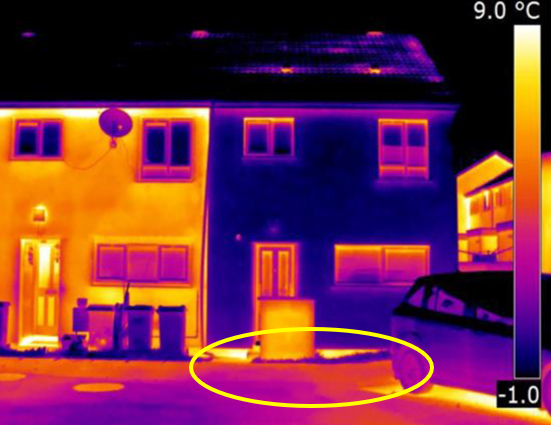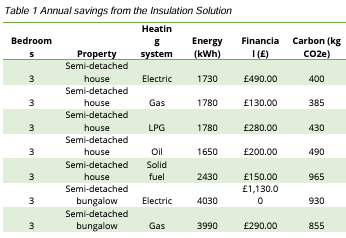Should you include underfloor insulation from Q-Bot in your WH:SHF Wave 3 application? – Yes
Warmer Homes: Social Housing Fund, Wave 3 (WH:SHF)
Time is running out. With the WH:SHF Wave 3 submission deadline just weeks away, social housing providers are focused on completing their applications.
The requirement to follow PAS2035 and complete Retrofit Assessments at scale has provided social landlords with a wealth of new data, superseding and invalidating previous assumptions.
Throughout SHDF Wave 2, the need for change requests has impacted delivery and caused delays.
It is great to see that the realisation of learnings from SHDF Wave 2 and the recognition of these challenges, (accurately forecasting the exact quantity and mix of energy efficiency measures – EEMs) are now reflected in changes to the scheme structure, and application process for Wave 3.
The phased approach of the Challenge Fund, outlined in the scheme guidance and described in ‘Section 3 – Delivery Forecast’ of the application form, acknowledges that different property archetypes, EEMs and/or locations, can be clustered into different delivery phases to improve effectiveness, deliver economies of scale, and better reflect the needs of the properties and residents included.
This also indicates the need to ensure that the outcome of, yet to be completed, Retrofit Assessments, are not pre-emptively assumed. This is especially important when considering procurement. All energy efficiency measures need to be available to successful applicants in order that the most appropriate, and impactful Retrofit Design can be achieved for the homes included in any programme.
It is not controversial to suggest that there are inaccuracies, or gaping holes, in EPC data. In previous iterations of SHDF this has sometimes led to properties being excluded, or removed from projects because the EEMs best matched to a property’s needs have not been available, or considered.
What is WH:SHF hoping to achieve?
It is essential we are conscious of the intended outcomes WH:SHF is tasked with achieving .
The key aims and objectives are;
- Fuel Poverty: Reduce the number of households in fuel poverty
- Carbon: Deliver cost effective carbon savings
- Residents: Improve the comfort, health and wellbeing of social housing residents by delivering warmer homes
- Green Economy: Support economic resilience, a green recovery, and thousands of jobs
- Develop the Retrofit Sector: Create the conditions for growth in the retrofit supply chain
For homes with a suspended timber floor, there is one energy efficiency measure that can satisfy all of these objectives, in a scalable, cost-effective way. Q-Bot underfloor insulation (UFI).
Why Q-Bot underfloor insulation?
As many as 10 million homes in the UK have suspended timber floors, data indicates roughly 1 million of these homes are socially rented. There is a strong correlation between properties with suspended timber floors and poor EPC ratings (D, or below), and fuel poverty.
Why is this? Data collected from over 13,000 floor surveys conducted by Q-Bot, and our network of accredited partners in the UK, indicate less than 1% of suspended timber floors have been insulated, meaning homes remain draughty, at risk of damp and mould, and prone to up to 30% heat loss (1).
The recently published ‘Demonstration of Energy Efficiency Potential’ (DEEP) (2) research, from DESNZ
As well as a University of Cambridge (3) study of over 55,000 homes, both provide evidence that the real-world measured energy savings of loft insulation, cavity wall insulation and traditional underfloor insulation perform well below the expected modelled level.
According to the DEEP research by Leeds Beckett & Salford Universities, traditional floor isulation methods (insulation cut and fitted between floor joists from above) failed to deliver modelled energy savings, with 50% of installations delivering no measurable savings and the remaining 50% with energy savings below 5% (2). You can see in the thermal image below, heat escaping from the floor in one of the homes insulated with traditional UFI and evaluated in the study.

The same study found top up loft insulation delivered even lower energy savings than traditional floor insulation, in all cases providing measured energy savings below 2%.
According to the study by University of Cambridge (3), which analysed 55,154 households, loft insulation saved only 4% of energy immediately after installation, 1.8% a year later with no detectable energy savings thereafter. Cavity Wall Insulation was marginally more effective with initial energy savings of 7%, dropping to 4% after a year and below 2% thereafter.
In stark contrast to this, an earlier (2019) study by Leeds Becket University using Co-Heating Tests, validated that Closed Cell Spray Foam Insulation applied consistently below the floor (and creating an airtight, vapour impermeable barrier) can reduce heat loss from dwellings by up to 24% (4)
These findings were then verified by the Energy Saving Trust in 2020 and 2022 (5)
Whilst unit rates of both Gas and Electricity fluctuate over time, kwh and Carbon savings (associated with properties heated by Gas) remain consistent, and therefore beneficial real-life cost savings to residents, as well as carbon savings for Social Housing providers remain.
 (5) (6)
(5) (6)
Resident health & wellbeing
With up to 54% of a properties uncontrolled air infiltration entering the home through an uninsulated suspended timber floor, risks to property and resident health are impacted by increased relative humidity (increasing the risk of damp & mould), transfer of contaminants, and draughts.
The risks to residents’ health are explored in detail in the latest research, approved by the Royal Institute for British Architects (RIBA) and presented as part of their CPD Training series, which identifies the sub-floor void as a source of contaminants such as MVOCs (Microbial Volatile Organic Compounds) including mould, and fungal spores as well as radon gas.
Insulating suspended timber floors, with an air tight, vapour impermeable barrier not only reduces infiltration, and heat loss, but also protects the floor structure from the moisture risk below. (7)
Conclusions
Following PAS2035 will highlight the specific needs of individual properties and archetypes. WH:SHF applicants should therefore include all EEMs types in their application and consider creating phases specific to property archetypes and locations. This includes underfloor insulation for homes with suspended timber floors which are more prevalent than most people appreciate
Reducing fuel poverty, delivering carbon savings, demonstrating value for money and improving the health and wellbeing of residents requires the installation of energy efficiency measures which have the greatest impact.
According to latest studies, loft insulation, cavity wall insulation and traditional underfloor insulation, all perform well below the expected modelled level, providing limited real-world energy, carbon, and cost savings, reduced further over time (2)
Q-Bot underfloor insulation reduces heat loss by 24%, significantly reducing energy bills, improving comfort and reducing the risk of damp and mould (4)(7) improving indoor air quality and the health and wellbeing of residents and does not deteriorate over time.
To learn more;
View The DEEP Retrofit Project video summary, Click here to book your Q-Bot RIBA Approved CPD Training,and use this link to schedule a Teams call at a convenient time.
- (1) Kendrick J, An overview of combined modelling of heat transport and air movement Technical Note 40 (Coventry: Air Infiltration and Ventilation Centre) (1993)
- (2) The ‘DEEP’ Study from Leeds Beckett & Salford Universities (2021-24) https://www.gov.uk/government/publications/demonstration-of-energy-efficiency-potential-deep
- (3) Penasco, C., Anadon, L. D. Assessing the effectiveness of energy efficiency measures in the residential sector gas consumption through dynamic treatment effects: Evidence from England and Wales. https://www.cam.ac.uk/research/news/insulation-only-provides-short-term-reduction-in-household-gas-consumption-study-of-uk-housing
- (4) David Glew, David Johnston, Dominic Miles-Shenton & Felix Thomas (2019): Retrofitting suspended timber ground-floors; comparing aggregated and disaggregated evaluation methods, Building Research & Information, DOI: 10.1080/09613218.2019.1681927. To link to this article: https://doi.org/10.1080/09613218.2019.1681927
- (5) Energy Saving Trust Verification Report (2022)
- (6) Table 1 calculations are based on the following;
Gas unit rate of 7.4p/kwh
Electricity unit rate of 16.7p/kwh
- (7) Beneath the boards – Q-Bot’s RIBA approved suspended timber floor void research
